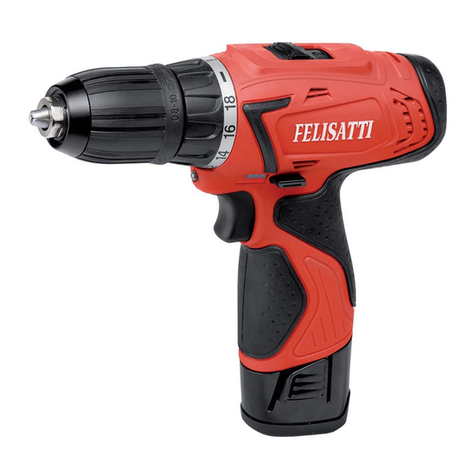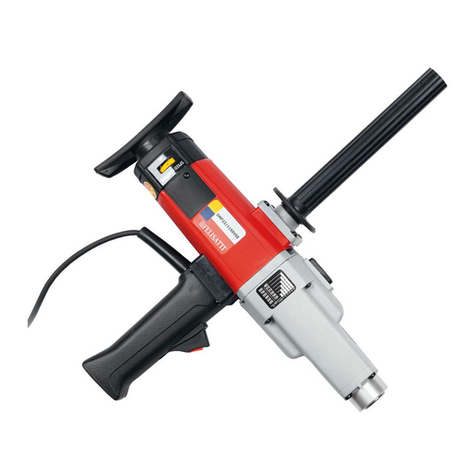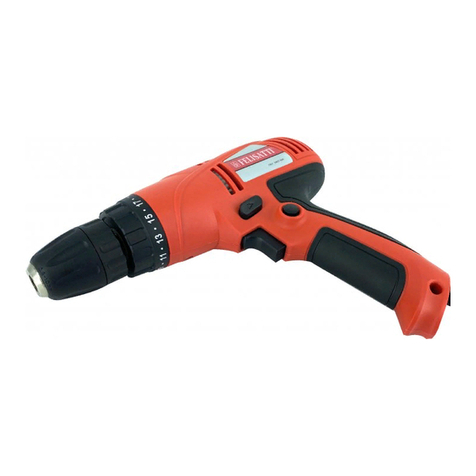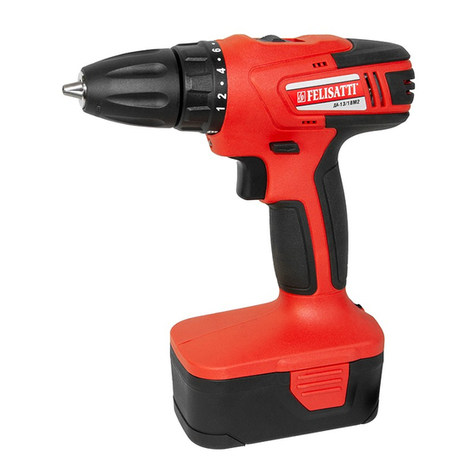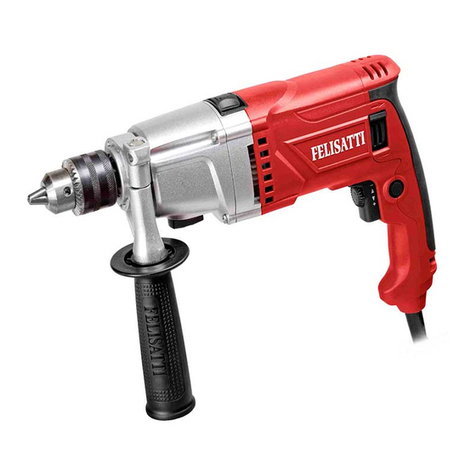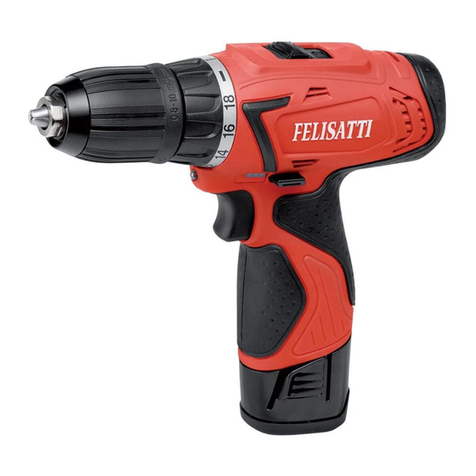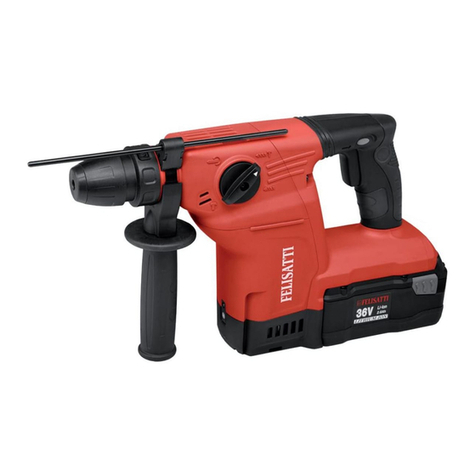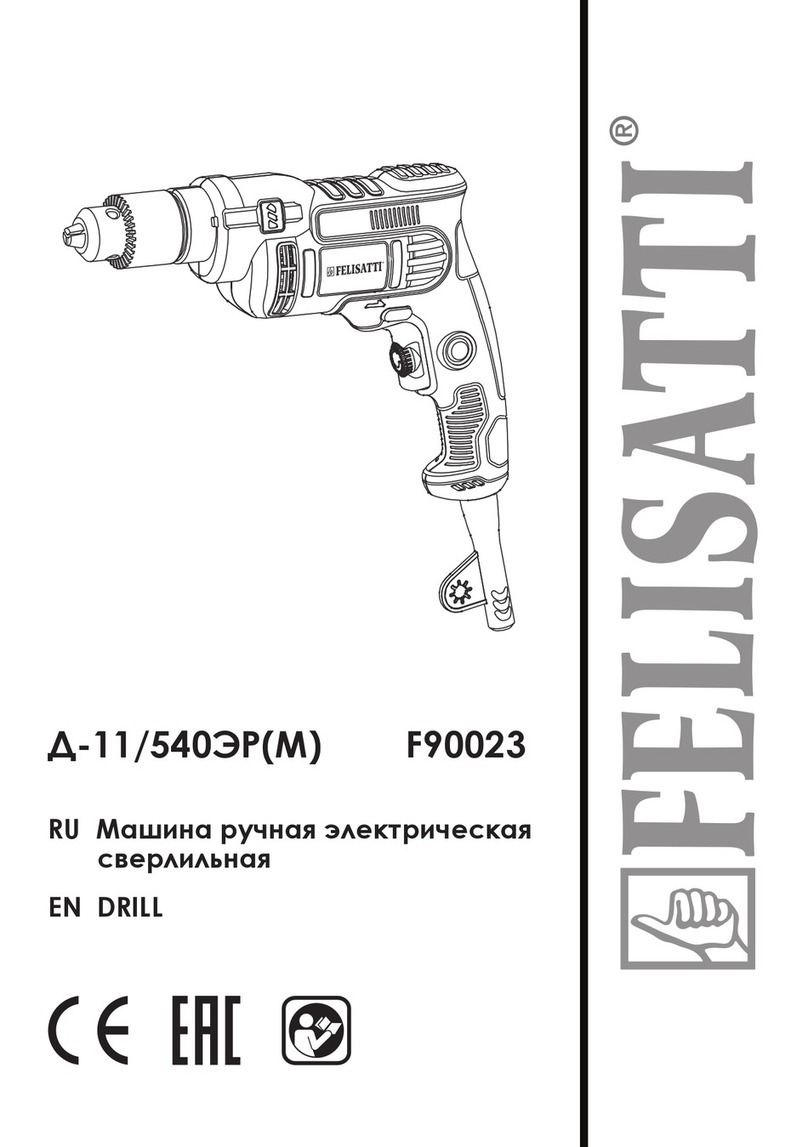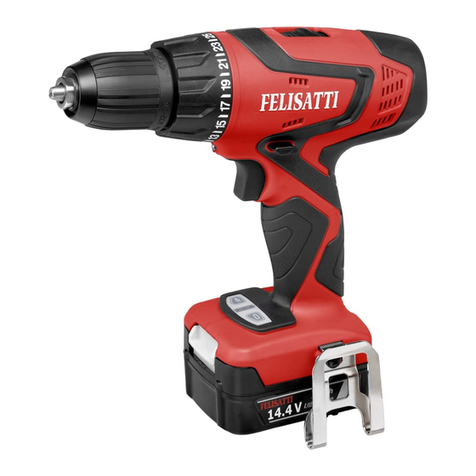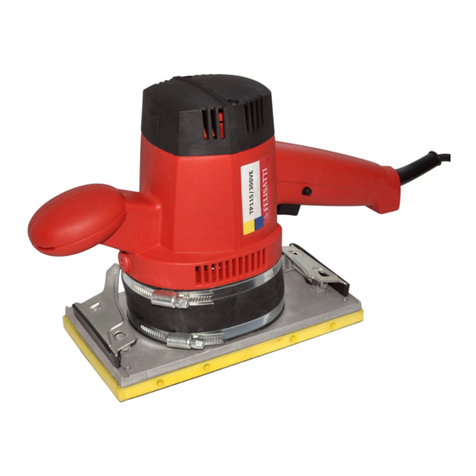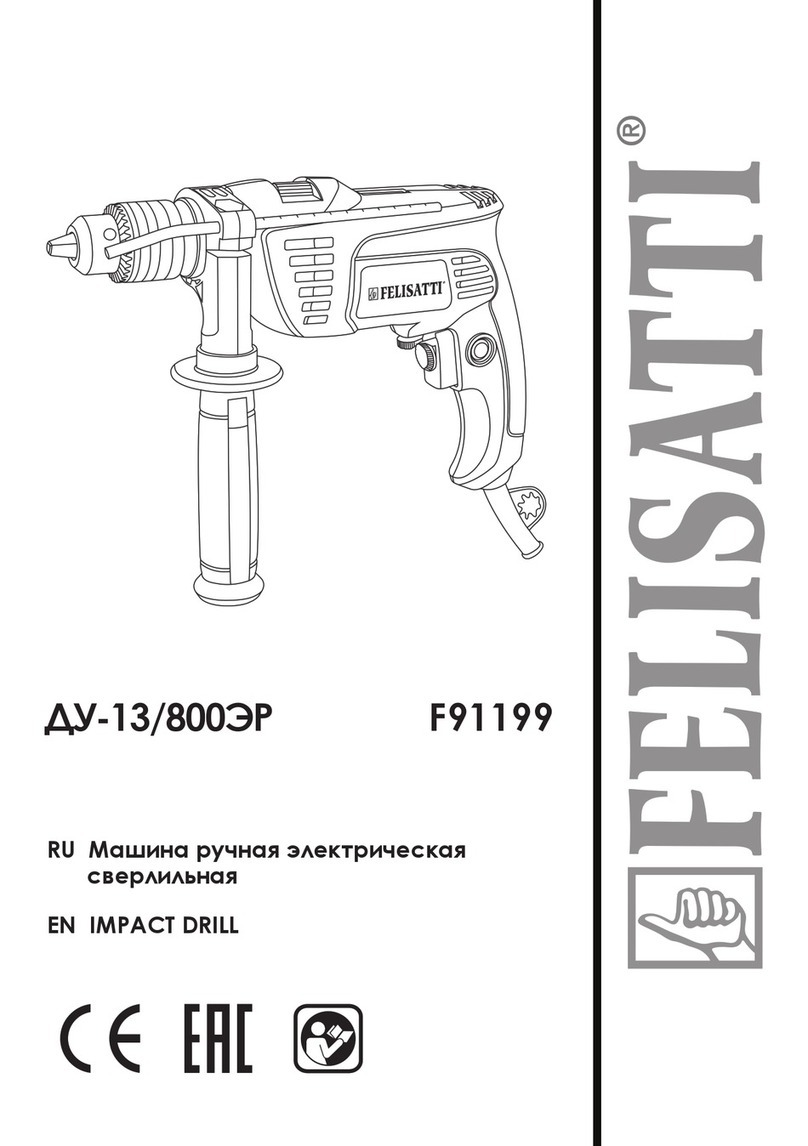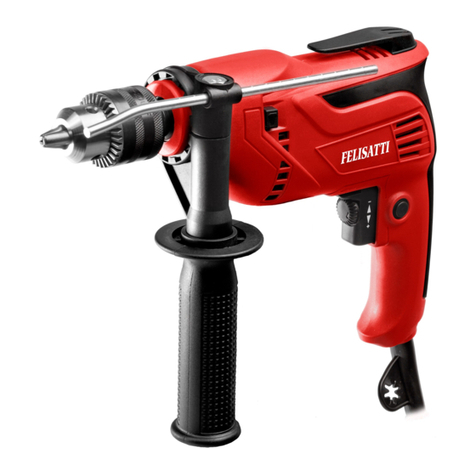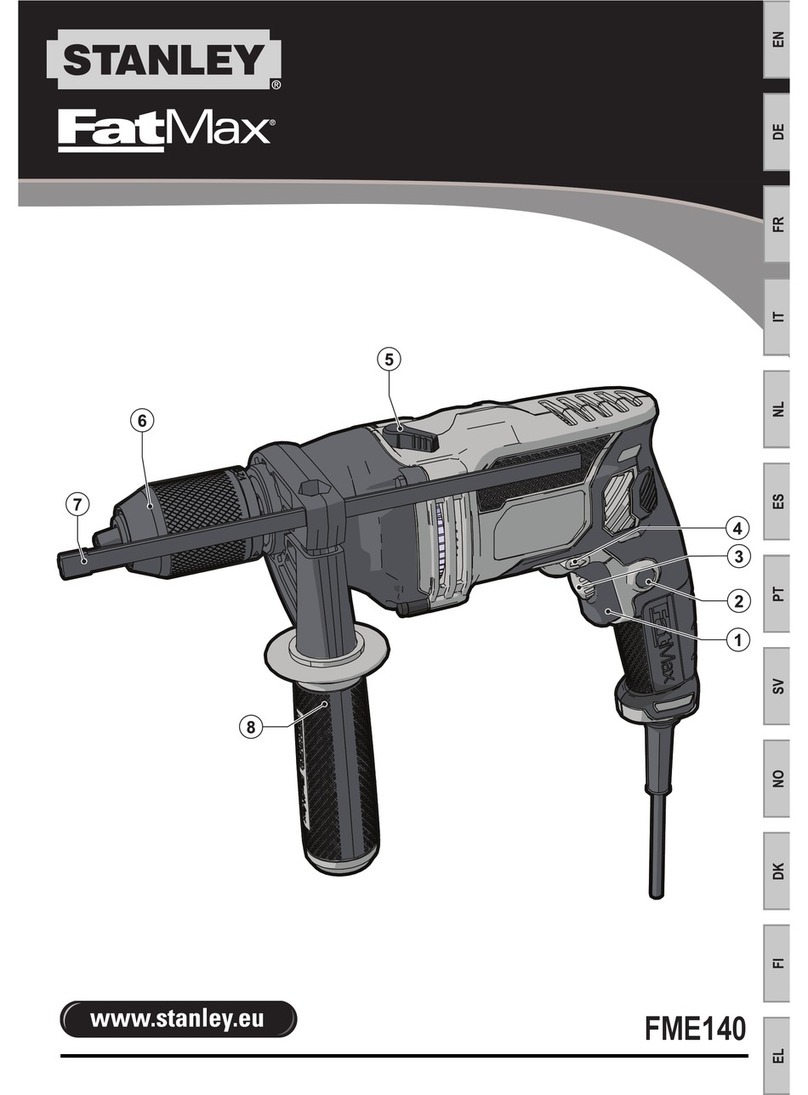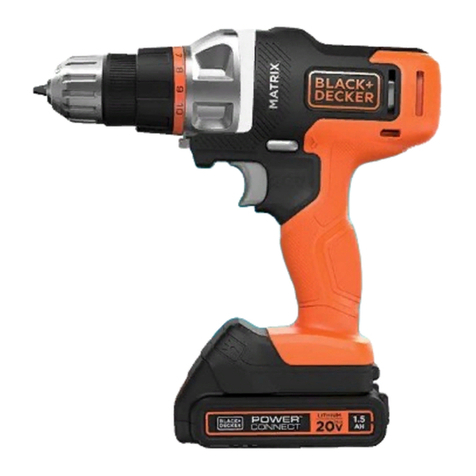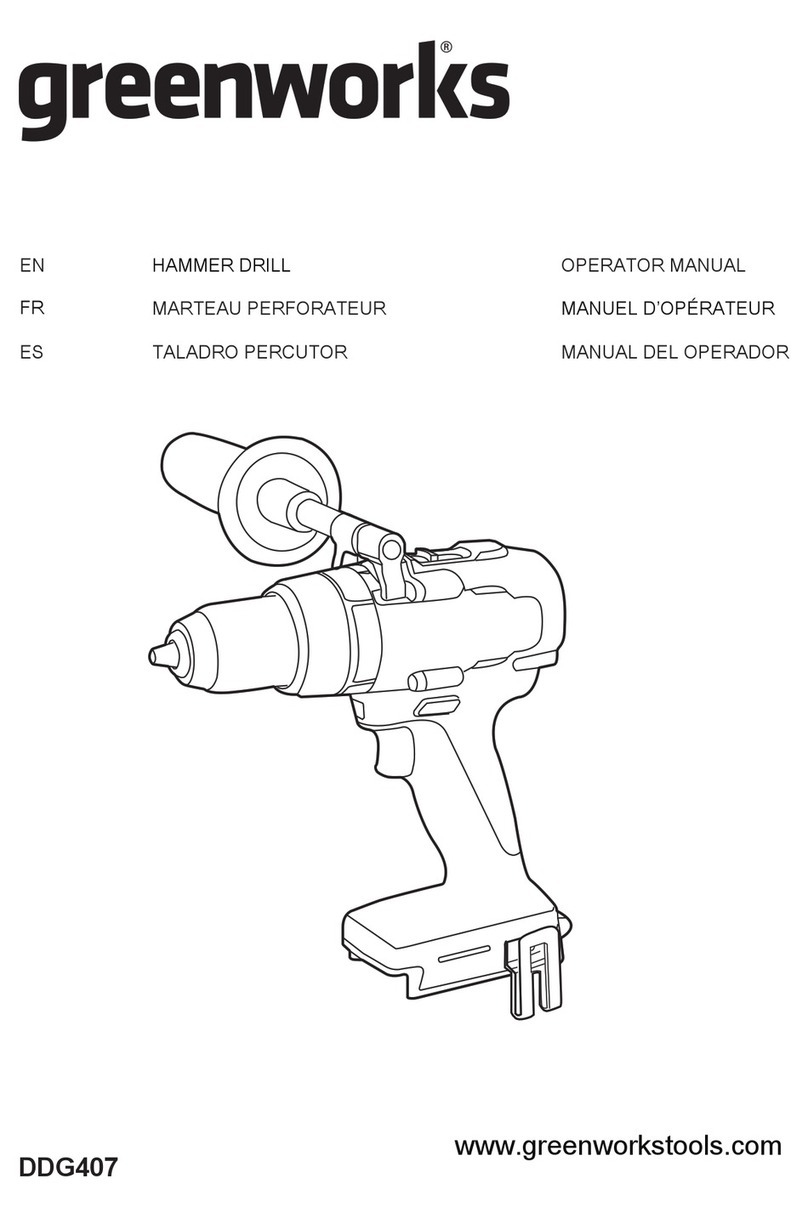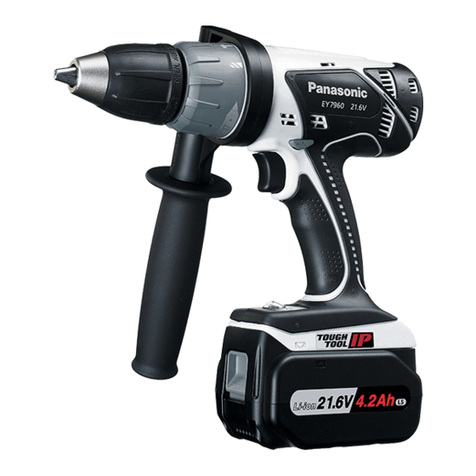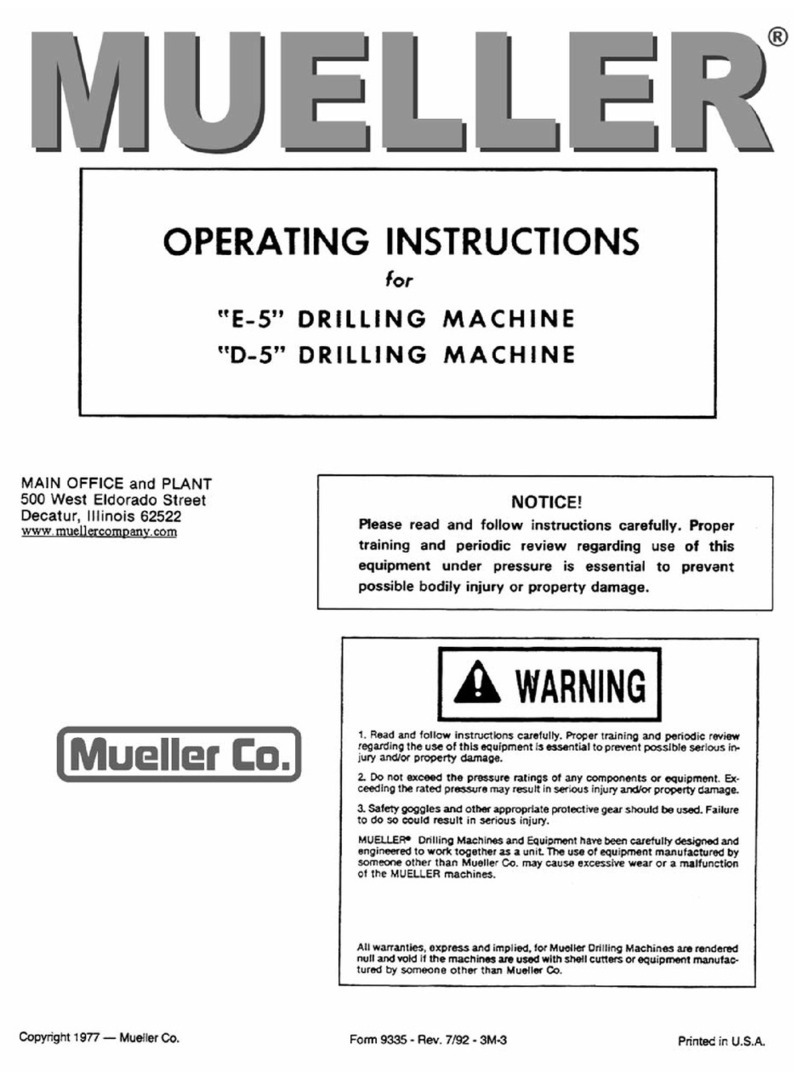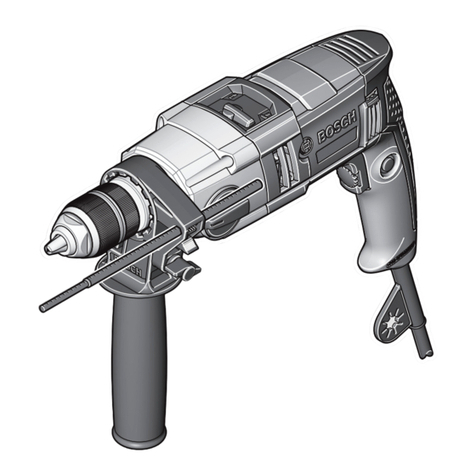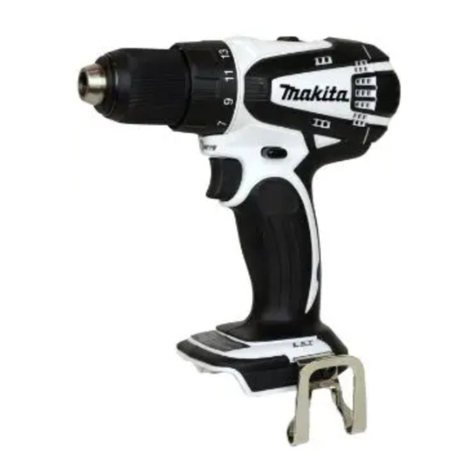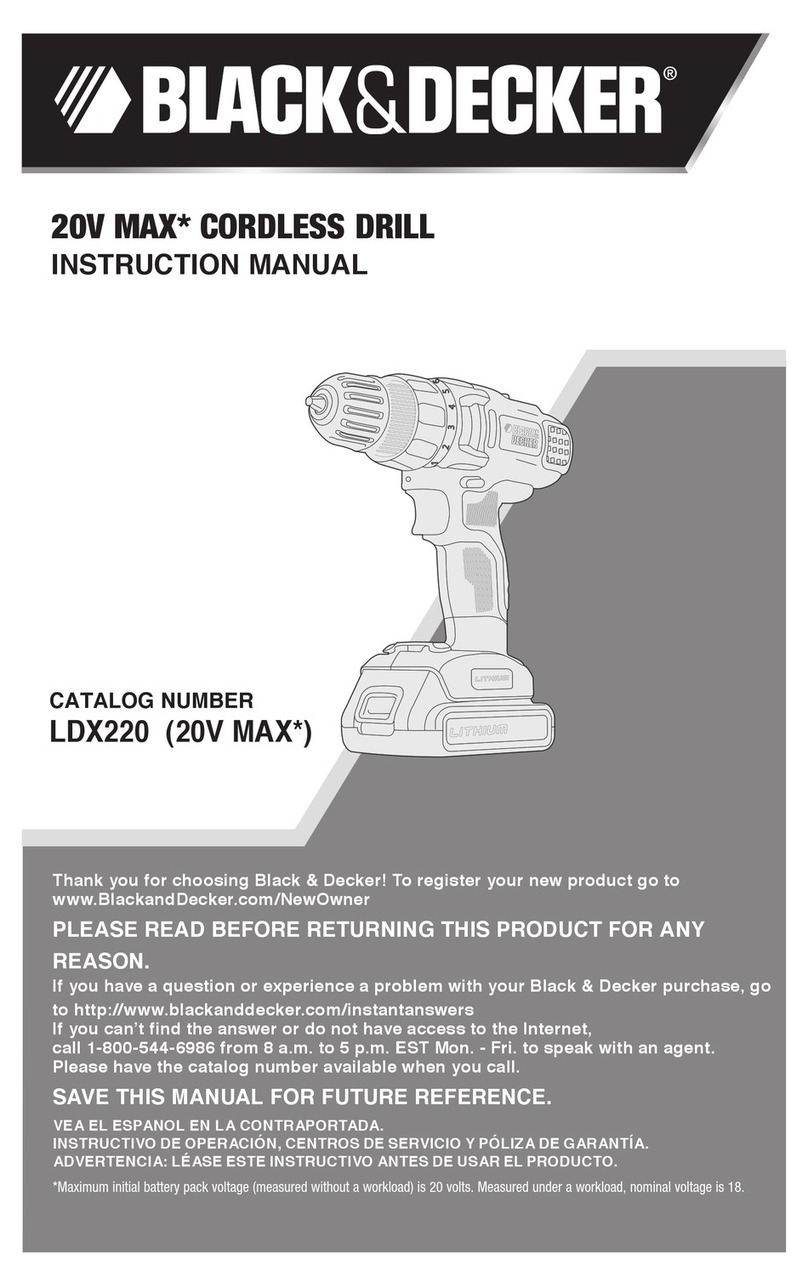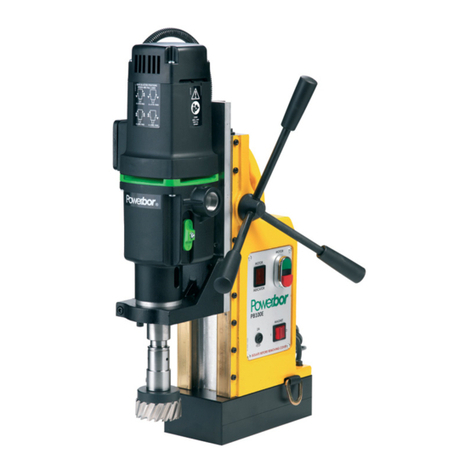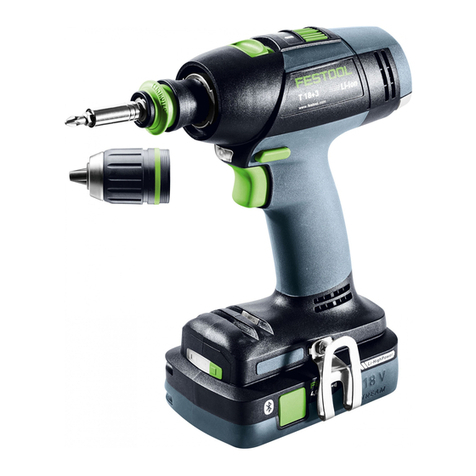
3
i) Use auxiliary handle(s), if supplied with the
tool.
Loss of control can cause personal injury.
j) Hold power tool by insulated gripping
surfaces, when performing an operation
where the cutting accessory may contact
hidden wiring or its own cord.
Cutting accessory contacting a “live” wire may
make exposed metal parts of the power tool “live”
and could give the operator an electric shock
4) Power tool use and care
a) Do not force the power tool. Use the correct
power tool for your application.
The correct power tool will do the job better and
safer at the rate for which it was designed.
b) Do not use the power tool if the switch does
not turn it on and off.
Any power tool that cannot be controlled with the
switch is dangerous and must be repaired.
c) Disconnect the plug from the power source
and/or the battery pack from the power tool
before making any adjustments, changing
accessories, or storing power tools.
Such preventive safety measures reduce the risk
of starting the power tool accidentally.
d) Store idle power tools out the reach of
children and do not allow persons unfamiliar
with the power tool or these instructions to
operate the power tool.
Power tools are dangerous in the hands of
untrained users.
e) Maintain power tools. Check for
misalignment or binding of moving parts,
breakage of parts and any other condition
that may affect the power tools operation. If
damaged, have the power tool repaired before
use.
Many accidents are caused by poorly maintained
power tools.
f) Keep cutting tools sharp and clean.
Properly maintained cutting tools with sharp
cutting edges are less likely to bind and are easier
to control.
g) Use the power tool, accessories and tool
bits etc. in accordance with these instructions,
taking into account the working conditions
and the work to be performed.
Use of the power tool for operations different
from those intended could result in a hazardous
situation.
5) Battery tool use and care
a) Recharge only with the charger specied by
the manufacturer.
A charger that is suitable for one type of battery
pack may create a risk of re when used with
another battery pack.
b) Use power tools only with specically
designated battery pack.
Use of any other battery packs may create a risk
of injury and re.
c) When battery pack is not in use, keep it
away from other metal objects, like paper
clips, coins, keys, nails, screws, or other small
metal objects that can make a connection
from one terminal to another.
Shorting the battery teminals together may cause
burns or a re.
d) Under abusive conditions, liquid may be
ejected from the battery; avoid contact. If
contact accidentally occurs, ush with water.
If liquid contacts eyes, additionally seek
medical help.
Liquid ejected from the battery may cause
irritation or burns.
6) Service
a) Have your power tool serviced by a
qualied repair person using only identical
replacement parts.
This will ensure that the safety of the power tool
is maintained.
Specic Safety
and Warnings
• Do not use the wet tools or in the
rain.
You can be killed by an electric shock or
injured seriously.
• Do not insert wires or other similar objects
into the ventilation slots.
You can be killed by an electric shock or injured
seriously.
• Do not removal the battery charger. Keep out
of reach of children.
Person injury by an electric shock.
• Do not put the battery in a re.
The battery can be exploded by high temperature,
and it may cause a dangerous injury.
• Do not disassemble charger or operate the
charger if it has received a sharp blow, been
dropped or otherwise damaged in any way.
Replace damaged cord or plugs immediately.
Incorrect reassembly or damage may result in
etectric shock or re.
• Take care not to short-circuit the terminal of
the battery.
When two terminals of the battery are short-
circuited, an enormous current is generated. In
result, a re or explosion can be occurred, which
may cause a serious personal injury. • Do not
make your ngers and hands touch with the
drill bit during operation.
When your ngers and hands are touched with
the drill bit or caught in it, you may be injured
seriously.
• Do not leave the running tool.
Other operators stayed close to you may be
injured.
• Set the forward/reverse lever in the neutral
position while you are changing or operating
the tool.
Careless operating of the switch may cause a
serious injury by the rotating part of the tool.
